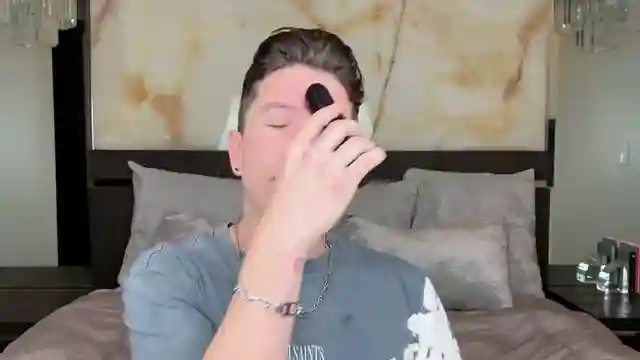Timeless Beauty: Unveiling Ancient Skincare Secrets with Hyram

- Authors
- Published on
- Published on
In this riveting episode, Hyram takes us on an exhilarating journey through the captivating history of skincare. From the ancient Egyptians slathering themselves in olive oil and essential oils to the enigmatic Cleopatra indulging in luxurious sour milk baths rich in lactic acid, the origins of skincare are as intriguing as they are ancient. Not to be outdone, the resourceful Greeks concocted potions with berries, olives, and even lead mixed with crocodile dung for that coveted pale complexion. It's a wild ride through time as we witness the evolution of skincare practices across different civilizations.
Venturing eastward, we discover the innovative ancient Chinese using rice water and Pearl powder for skin hydration and luminosity. Meanwhile, in India, saffron was hailed for its anti-aging properties, with Cold Cream made of rose oil and Beeswax paving the way for modern skincare innovations. As we traverse through medieval Europe, animal fats, plants like aloe vera, and even wine were employed in skincare routines, showcasing the creativity and resourcefulness of our ancestors. The use of stones like amethyst for skincare purposes adds a touch of mystique to the historical beauty regimens.
Hyram's exploration of skincare history not only educates but also entertains, painting a vivid picture of the lengths people went to for beauty. From sand exfoliation in ancient Egypt to the peculiar mixtures of lead and crocodile dung in ancient Greece, each civilization had its unique approach to skincare. The episode serves as a reminder of the timeless quest for beauty and self-care practices that have transcended centuries. It's a rollercoaster of discoveries and revelations that will leave you in awe of the ingenuity and traditions that have shaped modern skincare routines.

Image copyright Youtube

Image copyright Youtube

Image copyright Youtube

Image copyright Youtube
Watch Why Did Ancients Use 🩸On Thir Face? The Entire History of Skin Care on Youtube
Viewer Reactions for Why Did Ancients Use 🩸On Thir Face? The Entire History of Skin Care
Lanolin is wool wax and can be a moisturizer, but some dermatologists avoid it due to potential allergies
Wool wax is the waxy coating on sheep's wool, acting as a waterproofing agent
Positive feedback on the beauty history segment and APLB serum
Ancient Egyptians were innovative in skincare solutions, like using honey for its antibacterial properties
Egg whites and pearl cream are used in skincare by some, with historical context on Queen Elizabeth I's scars
Interest in more videos on skincare history and culture
Concerns about cosmetic surgery trends in South Korea
Appreciation for the historical content and research in the video
Use of traditional Indian skincare ingredients like turmeric, neem, aloe vera, coconut oil, saffron, rose petals, and lotus
Suggestions for more videos on the history of beauty trends and clean beauty origins
Related Articles

Escaping Mormonism: A Cautionary Tale of Indoctrination and Liberation
Hyram shares his intense upbringing in Mormonism, highlighting strict rules, emotional turmoil post-baptism, and the conflict of realizing his homosexuality in a community opposed to it. His story serves as a cautionary tale against oppressive religious indoctrination.

Hyram's Canadian Skincare Journey: Hits and Misses in the Quest for Perfect Skin
Hyram's skincare adventure in Canada includes tech troubles, a Facebook hack, and finding Selfless by Hyram products at Marshalls and Wyinners. Testing Rocky Mountain Soap Factory's cleansing oil, cream cleanser, and face polish reveals hits and misses in the quest for the perfect skincare routine.

Hyram's Top Korean Skincare Picks on Style Vana
Discover top Korean skincare products recommended by Hyram on Style Vana. From gentle cleansers to redness-reducing serums and innovative skincare tools, elevate your routine with these game-changing products.

Beef Tallow in Skincare: Benefits, Risks, and Research-backed Insights
Hyram explores the trend of using beef tallow in skincare, discussing its benefits and risks. He highlights its potential to clog pores and trigger breakouts, emphasizing the importance of research-backed skincare choices.
